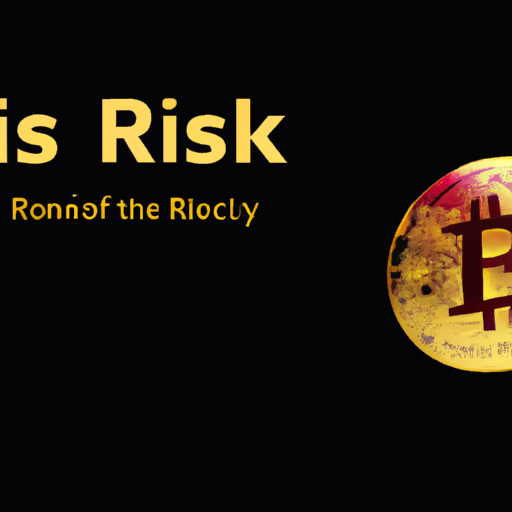Gold has long been considered a safe and reliable investment, which is why many people, like yourself, turn to this precious metal to diversify their portfolios. From physical gold, such as coins and bars, to digital gold, like exchange-traded funds (ETFs) and cryptocurrencies, there are various ways to invest in this shiny asset. But, as with any investment, there are risks and rewards associated with each form. In this article, we will explore the different gold forms available, examining the potential risks and rewards of each, so you can make informed decisions when adding gold to your investment strategy. So, let’s get started, shall we?
Introduction to Gold Investment
Investing in gold has long been perceived as a safe and secure way to preserve and grow wealth. Gold is not only a precious metal but also a versatile investment option that offers numerous benefits. In this comprehensive guide, we will explore the various forms of gold investments and discuss the risks and rewards associated with each.
Importance of Gold as an Investment
Gold has maintained its value and purchasing power throughout history. It is often seen as a hedge against inflation and currency fluctuations. Unlike paper currency, gold is a tangible asset that cannot be easily manipulated or devalued by governments or central banks. This makes it an attractive option for investors seeking stability and wealth preservation in uncertain economic times.
Historical Performance of Gold
The performance of gold over the years has been remarkable. Historically, gold has exhibited a strong track record of preserving purchasing power and generating attractive returns. During periods of economic crisis and market volatility, gold has often outperformed other asset classes. It has provided investors with a sense of security and a reliable store of value, making it a popular choice in diversified investment portfolios.
Diversification Benefits of Gold
One of the key benefits of including gold in an investment portfolio is its diversification potential. Gold has a low correlation with traditional asset classes such as stocks and bonds. This means that when stocks or bonds decline in value, gold may act as a stabilizing force, helping to offset potential losses. By diversifying into gold, investors can reduce the overall risk of their portfolio and potentially enhance long-term returns.
Understanding Physical Gold
Physical gold refers to gold in its physical form, such as bars, coins, or jewelry. Investing in physical gold provides investors with tangible ownership of the metal, offering a sense of security and peace of mind.
Types of Physical Gold
There are various types of physical gold available for investment purposes. One common option is gold bullion bars, which are produced by certified refiners and come in different sizes ranging from 1 ounce to 1 kilogram. Gold coins, such as the American Eagle or the South African Krugerrand, are also popular among investors and collectors alike. Additionally, some individuals invest in gold jewelry for both its aesthetic value and as a means of holding physical gold.
Pros and Cons of Physical Gold Ownership
Owning physical gold has its advantages and disadvantages. One of the main advantages is the ability to have direct control over your investment and the ability to store it yourself. Physical gold is a tangible asset that you can physically hold and verify. It also provides a hedge against currency fluctuations and the potential for financial turmoil.
However, there are also drawbacks to owning physical gold. Storing large quantities of physical gold can be challenging, as it requires secure storage facilities such as a safe deposit box or a vault. There are also costs associated with the purchase, storage, and insurance of physical gold. Additionally, selling physical gold can sometimes be more cumbersome compared to other forms of gold investment.
Storing Physical Gold
Choosing the right storage method for your physical gold is crucial to ensure its safety and security. Considerations such as accessibility, convenience, and protection from theft or damage should be taken into account.
One option is to store your physical gold at home. This allows for easy access and control over your investment. However, it is important to take necessary precautions to secure your gold and protect it from theft or loss. Installing a home safe or utilizing hidden storage options can provide added security.
Another option is to store your gold in a professional storage facility. This provides enhanced security measures, including 24/7 surveillance, insurance coverage, and specialized storage equipment. Many storage facilities offer dedicated vaults specifically designed for storing precious metals. It is essential to choose a reputable storage provider with a solid track record and proper security protocols in place.
Exploring Gold ETFs
Gold Exchange-Traded Funds (ETFs) are investment vehicles that track the price of gold. They offer investors the opportunity to gain exposure to the performance of gold without directly owning physical gold.
Introduction to Gold ETFs
Gold ETFs are designed to replicate the price movements of gold by holding physical gold bullion or derivative contracts. These funds are traded on stock exchanges, providing investors with easy access to the gold market. Gold ETFs are an efficient and cost-effective way to invest in gold, as they eliminate the need for physical storage and the associated costs.
Advantages of Gold ETFs
One major advantage of investing in gold ETFs is liquidity. Gold ETFs can be bought or sold throughout the trading day, allowing investors to take advantage of market opportunities and easily exit their positions if needed. Additionally, gold ETFs provide investors with diversification benefits, as they typically hold a basket of gold assets.
Gold ETFs also offer transparency, as they disclose the underlying assets on a daily basis. This allows investors to track the performance of their investment accurately. Furthermore, gold ETFs can be held within tax-advantaged accounts such as Individual Retirement Accounts (IRAs), providing potential tax benefits.
Risks Associated with Gold ETFs
While gold ETFs offer benefits, it is important to consider the risks involved. One risk is the potential disconnect between the ETF’s price and the actual price of gold. This can occur due to factors such as market demand, trading volumes, or the management fees of the ETF. In rare cases, this discrepancy can result in a premium or discount to the underlying value of the gold.
Another risk is counterparty risk. Gold ETFs that use derivative contracts or gold futures expose investors to the risk of the counterparty failing to fulfill their obligations. Additionally, like any investment in the stock market, gold ETFs are subject to market volatility and can experience price fluctuations. Investors should assess their risk tolerance and carefully consider the potential risks before investing in gold ETFs.
Unveiling Gold Futures
Gold futures are derivative contracts that obligate the buyer to purchase gold, and the seller to deliver gold, at a predetermined future date and price.
Overview of Gold Futures
Gold futures are traded on commodity exchanges, allowing investors to speculate on the future price of gold without taking physical ownership of the metal. These futures contracts are standardized, with each contract representing a specific quantity of gold.
Gold futures contracts typically have expiration dates, and investors can choose between different contract sizes and delivery months. The prices of gold futures are determined through open outcry trading or electronic trading platforms.
Potential Benefits of Gold Futures
Gold futures offer several potential benefits to investors. One advantage is the ability to speculate on the price of gold without having to own physical gold. Investors can take long or short positions based on their outlook for the market, potentially profiting from price movements in either direction.
Another benefit is leverage. Gold futures contracts require an initial margin deposit, which is a fraction of the value of the contract. This allows investors to control a larger amount of gold exposure with a smaller initial investment. However, it is important to note that leverage can magnify both gains and losses, increasing the risk involved.
Gold futures also provide liquidity, as they are actively traded on regulated exchanges. This allows investors to enter or exit their positions easily, providing flexibility and market access.
Risks Involved in Gold Futures Trading
Trading gold futures involves inherent risks that investors should carefully consider. One major risk is the potential for significant price volatility. Gold futures prices can fluctuate rapidly, and investors may experience substantial gains or losses within a short period.
Another risk of gold futures trading is the obligation to fulfill the contract. If an investor holds a futures contract until its expiration, they must either take physical delivery of the gold or offset their position by entering into an opposite trade. This can involve additional costs and complexities.
Additionally, leverage in futures trading can amplify losses. If the market moves against the investor’s position, they may be required to deposit additional margin to maintain their position or face the risk of position liquidation.
Investors considering gold futures should have a thorough understanding of the market, risk tolerance, and be prepared to closely monitor their positions.
Delving into Gold Mining Stocks
Investing in gold mining stocks provides exposure to the performance of gold by owning shares in companies involved in gold exploration, production, or mining operations.
Introduction to Gold Mining Stocks
Gold mining stocks represent investments in companies that are engaged in gold mining activities. These companies range from large multinational corporations to small exploration firms. By investing in gold mining stocks, investors gain exposure to the potential profits and risks associated with gold mining operations.
Factors Affecting the Performance of Gold Mining Stocks
The performance of gold mining stocks is influenced by a variety of factors. One key factor is the price of gold itself. The profitability of gold mining companies is closely tied to the price of gold, as higher gold prices generally lead to increased revenues and profits.
Other factors that can impact the performance of gold mining stocks include production levels, mining costs, and exploration success. Companies with higher production levels and lower costs may be better positioned to take advantage of higher gold prices. Additionally, successful exploration efforts can uncover new reserves and enhance the overall value of mining companies.
Evaluating Risks and Rewards in Gold Mining Stocks
Investing in gold mining stocks comes with its own set of risks and rewards. One of the main advantages is the potential for significant returns. If the price of gold rises, well-managed mining companies may experience substantial increases in profitability, which can translate into higher stock prices and potential capital gains for investors.
However, gold mining stocks are not without risks. One risk is company-specific, such as operational challenges or cost overruns. Political and regulatory risks can also impact mining operations, as changes in government policies or environmental regulations can affect the profitability and viability of mining projects.
It is important for investors to conduct thorough research on individual mining companies, assess their financial health, management expertise, and the geopolitical risks associated with their operations. Diversification within the sector is also advisable to spread risk and potentially enhance overall returns.
Analyzing Gold Certificates
Gold certificates are paper documents issued by banks or financial institutions that represent ownership of a specific quantity of gold.
What are Gold Certificates?
Gold certificates are an alternative form of owning physical gold. They offer the convenience of not having to physically store and secure gold, while still providing investors with the assurance that their investment is backed by actual gold reserves held by the issuing institution.
Gold certificates can be either allocated or unallocated. Allocated certificates represent ownership of specific gold bars or coins, while unallocated certificates represent a claim on a quantity of gold without specifying the exact bars or coins.
Advantages of Investing in Gold Certificates
Investing in gold certificates offers several advantages. One advantage is ease of ownership. Gold certificates can be easily bought or sold, providing investors with a liquid and easily tradeable investment.
Gold certificates also eliminate the need for physical storage and security concerns. Investors do not have to worry about the costs or logistics associated with storing and safeguarding physical gold. This is particularly appealing for those who prefer the convenience of a paper investment backed by physical gold.
Additionally, gold certificates provide fractional ownership of gold. Investors can purchase certificates representing smaller quantities of gold, allowing them to invest at a more affordable price point compared to buying physical gold in larger quantities.
Potential Risks in Gold Certificate Programs
While gold certificates offer convenience and ease of ownership, they are not without risks. One potential risk is counterparty risk. Gold certificates are only as reliable as the issuer, and investors are dependent on the financial stability and integrity of the issuing institution. If the issuer encounters financial difficulties or goes bankrupt, there is a risk that the value of the certificate may be compromised.
Another risk is the potential for fraudulent certificates. Investors should exercise caution and ensure that they are dealing with reputable institutions when purchasing gold certificates. Verification and due diligence are essential to minimize the risk of counterfeit or invalid certificates.
It is important for investors to carefully review the terms and conditions of gold certificate programs, understand the rights and obligations associated with ownership, and choose reputable issuers to mitigate potential risks.
Understanding Gold Options and Futures
Gold options and futures provide investors with additional tools to participate in the gold market and manage risk.
Basics of Gold Options
Gold options are financial instruments that give the buyer the right, but not the obligation, to buy or sell a specific quantity of gold at a predetermined price within a specified period. Options can be used to hedge against price fluctuations or take advantage of potential market movements.
Call options give the buyer the right to buy gold at a specified price, while put options give the buyer the right to sell gold at a specified price. The buyer pays a premium for the option, which represents the cost of the contract.
Key Features of Gold Futures
Gold futures were discussed earlier in this guide. However, it is important to highlight some key features of futures contracts and their role in the gold market.
Gold futures are standardized contracts that specify the quantity and quality of gold to be delivered at a predetermined future date and price. They are traded on regulated exchanges, providing investors with a transparent and regulated marketplace.
Futures contracts are typically settled through cash settlements rather than physical delivery of gold. This means that investors do not have to physically take delivery of the gold, but rather settle the contract’s value with a cash payment or offset their position by entering into an opposite trade.
Futures contracts are commonly used by market participants to speculate on the direction of gold prices, hedge against price movements, or manage risk in their portfolios.
Comparing Risks and Rewards in Gold Options and Futures
Both gold options and futures offer investors additional flexibility and risk management tools compared to direct ownership of physical gold. However, they also come with their own set of risks.
One major risk is the potential for price volatility. Options and futures prices can fluctuate rapidly, and investors may experience gains or losses depending on the direction of the market. Leverage can amplify both gains and losses, so investors should have a thorough understanding of the product and carefully consider their risk tolerance.
Options also have an expiration date, limiting the timeframe within which investors can exercise their rights. This adds a level of complexity to options trading, as investors need to accurately predict the timing and direction of market movements to realize profits.
It is important for investors to educate themselves on the intricacies of options and futures trading before engaging in these sophisticated investment strategies. Seeking the guidance of a professional financial advisor or broker can provide valuable insights and help navigate the complexities of these derivative instruments.
Examining Digital Gold
Digital gold, also known as electronic gold or e-gold, refers to a form of gold ownership that is entirely digital and can be accessed through online platforms.
Introduction to Digital Gold
Digital gold represents a technological advancement in gold ownership, allowing investors to gain exposure to the price movements of gold without the need for physical possession. In digital gold programs, each unit of digital gold represents a certain quantity of physical gold held by a custodian.
Digital gold providers leverage technology to facilitate the buying, selling, and storage of gold electronically. Investors can access their digital gold holdings through online platforms, track the real-time value of their investment, and initiate transactions with ease.
Benefits of Investing in Digital Gold
Investing in digital gold offers several advantages. One significant benefit is convenience. Digital gold provides investors with instant access to the gold market, eliminating the need for physical storage and associated costs. It also allows for easy buying and selling of gold, providing liquidity and flexibility.
Digital gold providers often offer fractional ownership, allowing investors to own and transact with smaller quantities of gold. This makes gold more accessible to a wider range of investors, enabling them to participate in the gold market at affordable price points.
Transparency is another advantage of digital gold. Investors can easily verify the quantity of gold held by the custodian and track the performance of their investment in real time. Some digital gold providers also offer features such as audited statements and secure storage arrangements, providing additional peace of mind for investors.
Risks Associated with Digital Gold
While digital gold offers convenience and accessibility, there are inherent risks associated with this form of investment. One risk is the potential for cybersecurity threats. As digital gold is stored online, it is vulnerable to hacking or other cyber-attacks. Investors should choose reputable providers with robust security measures in place to minimize the risk of unauthorized access or loss of digital assets.
Another risk is the reliability and trustworthiness of the custodian. Investors are dependent on the custodian’s ability to safeguard the physical gold and fulfill their obligations. It is important to thoroughly research and choose reputable digital gold providers with a proven track record and proper regulatory oversight.
Investors should also consider the risks associated with the digital infrastructure itself. Technological failures, software glitches, or network disruptions can impact the accessibility or functioning of digital gold platforms. Understanding these risks and having contingency plans in place is crucial for investors engaging in digital gold investments.
The Role of Gold in a Portfolio
Gold can play a valuable role in an investment portfolio by providing diversification, risk management, and potential long-term returns.
Portfolio Allocation Strategies for Gold
The allocation of gold within an investment portfolio depends on various factors, including risk tolerance, investment objectives, and market conditions. There is no one-size-fits-all approach, and different investors may have different perspectives on the appropriate allocation to gold.
One common strategy is to include a percentage of gold in a diversified portfolio as a hedge against potential economic uncertainties or market downturns. The specific allocation can vary depending on individual preferences and outlooks. Some investors may choose to allocate a smaller percentage, while others may opt for a higher allocation based on their risk appetite and long-term investment goals.
It is important to regularly review and rebalance portfolio allocations to reflect changing market conditions and investment objectives. The allocation to gold should be part of an overall investment strategy that takes into account other asset classes and the specific investment goals of the individual.
Risk Management with Gold
Gold can serve as a risk management tool within an investment portfolio. Due to its low correlation with other asset classes, gold can act as a diversifier and reduce the overall risk of the portfolio. During periods of market volatility or economic instability, gold has often shown resilience and acted as a safe haven asset.
However, it is essential to note that gold does not eliminate all investment risks. Like any investment, the price of gold can fluctuate, and investors may experience losses or gains. The performance of gold can be influenced by various factors, including global economic conditions, interest rates, and geopolitical events.
Investors should carefully assess their risk tolerance, investment time horizon, and overall financial goals when considering the role of gold in their portfolio. Consulting with a financial advisor can provide valuable insights and help determine the appropriate level of exposure to gold based on individual circumstances.
Long-Term Outlook for Gold
The long-term outlook for gold is a topic of speculation and debate among experts and analysts. Factors such as global economic conditions, monetary policies, and market dynamics can influence the price of gold and its performance over time.
Some analysts argue that gold will continue to maintain its value and offer a hedge against inflation and economic uncertainties. They believe that the demand for gold will remain strong due to ongoing geopolitical tensions, rising debt levels, and the potential devaluation of fiat currencies.
Others argue that the performance of gold is subject to market forces and can be influenced by multiple factors. They suggest that investors should consider the broader economic and market context when evaluating the long-term outlook for gold.
It is important for investors to conduct thorough research, stay informed about market developments, and consider a range of perspectives when assessing the long-term outlook for gold. Keeping a diversified investment portfolio and regularly reviewing investment strategies are prudent approaches to navigate the dynamic nature of the gold market.
Conclusion
In conclusion, the world of gold investment offers a diverse range of options, each with its own set of risks and rewards. From physical gold to digital gold, investors have numerous avenues to gain exposure to the performance of this precious metal.
Key takeaways from this comprehensive guide include the importance of gold as an investment, its historical performance, and the diversification benefits it brings to a portfolio. Understanding the different forms of gold investment, from physical gold to gold ETFs, futures, mining stocks, certificates, options, and digital gold, allows investors to make informed decisions based on their individual preferences and investment goals.
Considerations for choosing the right gold investment include factors such as liquidity, storage and security, associated costs, counterparty risks, regulatory oversight, and personal risk tolerance. Investors should carefully assess the advantages and disadvantages of each form of gold investment to determine the best approach for their unique circumstances.
Ultimately, the decision to invest in gold should align with an investor’s overall financial goals, risk tolerance, and time horizon. By carefully evaluating the risks and rewards in different gold forms and considering the long-term outlook for gold, investors can navigate the gold market with confidence and potentially enhance their investment outcomes.



